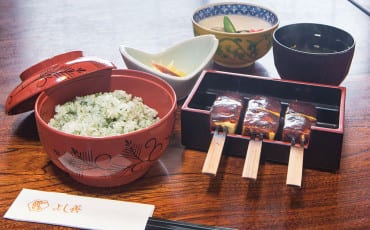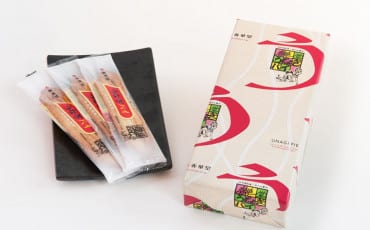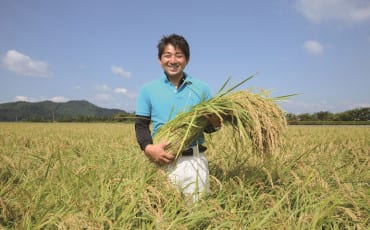Articles
Features
Jul 1, 2016
Adventures in Yamanashi
It’s no secret that the pride and joy of Yamanashi is Mount Fuji. Standing tall at 3,776 meters, it is the highest mountain in Japan as well as a designated World Heritage site. On any given day, you can stop a local and ask about Mount Fuji, and he or she will be able to easily point out the mountain in the distant landscape. Of course, depending on the season, Mount Fuji could be looming large and proud or it could be shrouded in mist, which was the case when we headed to the Fifth Station to admire the sunrise.
As we had hoped to capture the sunrise in all its glorious beauty, we left our hotel at 2am and headed for the Fifth Station Area of Mount Fuji, also known as Go-gome. As we stood there in the biting cold, stamping our feet to keep warm, I couldn’t help but be awed by the natural splendour that spanned out 360 degrees around me. Even though heavy clouds obstructed our view of the rising sun that day, the elegant beauty of Mount Fuji still shone through.
The Myths and Mysteries of Fuji-San
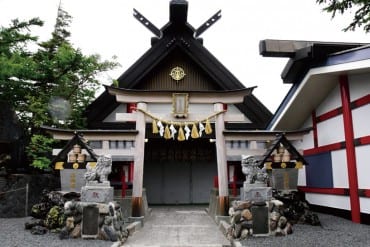 Mount Fuji is a dormant volcano, its last eruption was in 1707. For followers of the Shinto tradition, Mount Fuji is sacred to the goddess Sengen-Sama, whose shrine is found on the summit (which was forbidden to women untill 19th century). Every summer, thousands of pilgrims and tourists make the ascent up Mount Fuji, often hiking through the night so as to witness the sunrise from the summit. According to Shinto beliefs, the Fifth Station marks the boundary between the mortal and the sacred world. Even though I wasn’t on a pilgrimage, standing there taking in the breathtaking scenery was a soul-cleansing experience. You may also visit Fujisan Komitake Shrine where Komitake-Tarobo-Shoshin is worshipped as a god of the open road.
Mount Fuji is a dormant volcano, its last eruption was in 1707. For followers of the Shinto tradition, Mount Fuji is sacred to the goddess Sengen-Sama, whose shrine is found on the summit (which was forbidden to women untill 19th century). Every summer, thousands of pilgrims and tourists make the ascent up Mount Fuji, often hiking through the night so as to witness the sunrise from the summit. According to Shinto beliefs, the Fifth Station marks the boundary between the mortal and the sacred world. Even though I wasn’t on a pilgrimage, standing there taking in the breathtaking scenery was a soul-cleansing experience. You may also visit Fujisan Komitake Shrine where Komitake-Tarobo-Shoshin is worshipped as a god of the open road.
Fujisan Komitake Shrine
5617 Komitake shita, Kamiyoshida, Fujiyoshida city, Yamanashi 403-0005
Fugaku Wind Cave
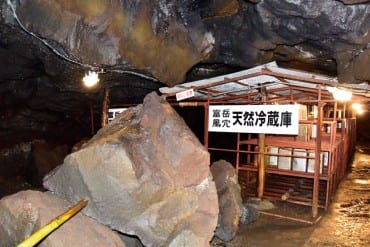 Mount Fuji’s past eruptions and the resulting lava flows created several different caves in the Fuji Five Lakes region, which is around the mountain’s northern base. We visited two of these caves – the Fugaku Wind Cave and the Narusawa Ice Cave.
Mount Fuji’s past eruptions and the resulting lava flows created several different caves in the Fuji Five Lakes region, which is around the mountain’s northern base. We visited two of these caves – the Fugaku Wind Cave and the Narusawa Ice Cave.
Up till 1955, Fugaku Wind Cave was used as a natural storehouse and refrigerator for silkworm cocoons and seeds. This is because the temperature inside the cave stays at a relatively constant zero degrees Celsius throughout the year. Even now, when you enter the cave, you can feel the sharp dip in temperature. The cave is still furnished with several store-boxes of acorns and silkworm cocoons as a demonstration of how things were done in the past.
Fugaku Wind Cave
2068-1 Aokigahara Saiko, Fujikawaguchiko-machi,Minamitsuru-gun, Yamanashi 401-0332
TEL:0555-85-2300
Narusawa Ice Cave
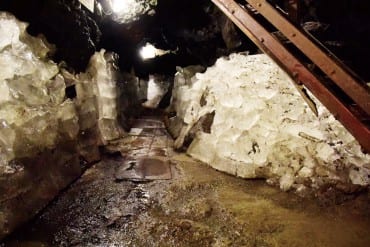 Narusawa Ice Cave is a little more exciting than Fugaku Wind Cave. Because the temperature in the Ice Cave usually stays below freezing point, it used to be a storage space for ice (before it was transported to nearby Tokyo). While the walk around the cave is not very long, it was a little tricky navigating the low ceilings and slippery stairs along the passageways. With just a thin jacket to protect me from the cold, I was glad to step back outside into the warm and inviting sunshine.
Narusawa Ice Cave is a little more exciting than Fugaku Wind Cave. Because the temperature in the Ice Cave usually stays below freezing point, it used to be a storage space for ice (before it was transported to nearby Tokyo). While the walk around the cave is not very long, it was a little tricky navigating the low ceilings and slippery stairs along the passageways. With just a thin jacket to protect me from the cold, I was glad to step back outside into the warm and inviting sunshine.
Narusawa Ice Cave
8533 Narusawa-mura, Minamitsuru-gun, Yamanashi 401-0320
Tel:0555-85-2301






